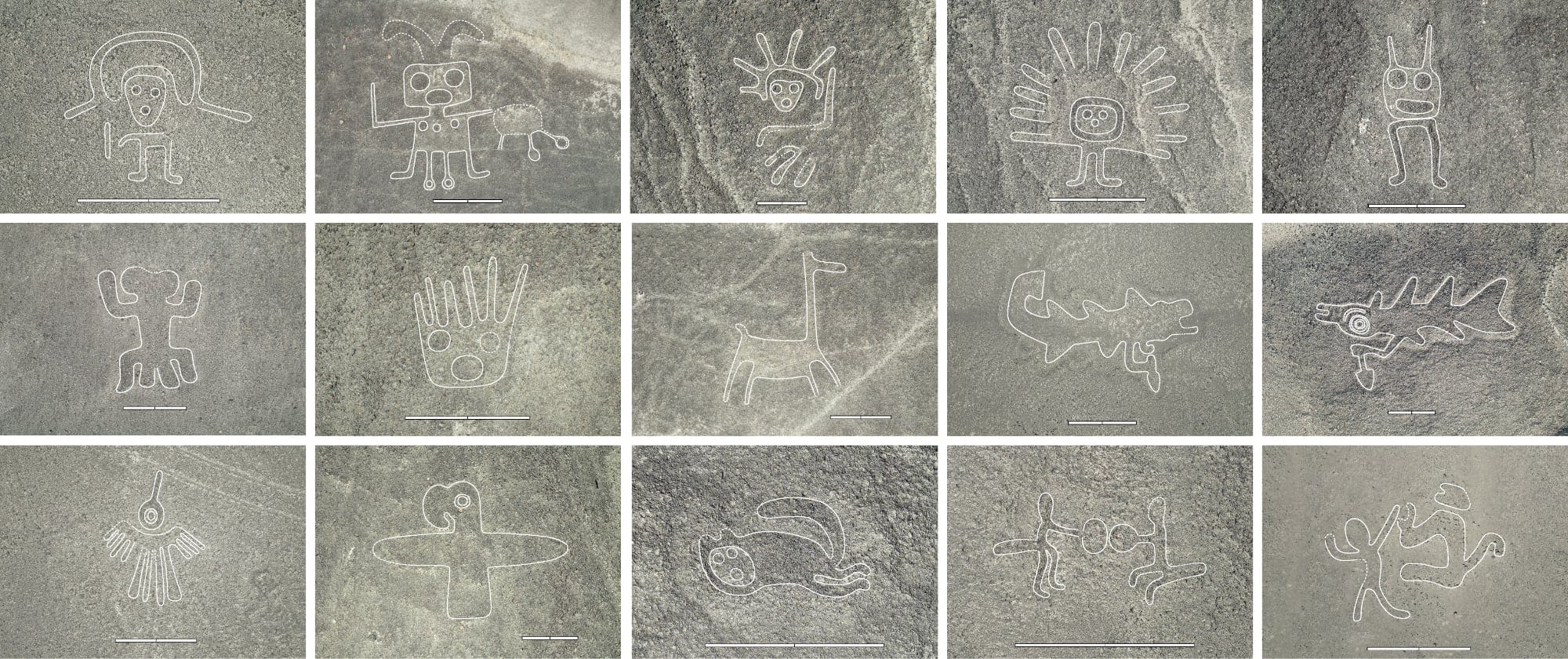
In 2022, we shared news of a monumental discovery at Peru’s Nazca Pampa, a UNESCO World Heritage site once home to pre-Inca Indigenous peoples who were fond of etching gargantuan artworks into the earth’s surface. Discovered in 1927, archaeologists spent nearly a century uncovering 430 figurative glyphs depicting animals, people, and hybrid creatures.
But thanks to a new A.I.-trained system, researchers have identified an additional 303 drawings in just six months as detailed in a study published this week in the Proceedings of the National Academy of Sciences. Included in the findings are various birds, cats, ceremonial acts, and even a killer whale wielding a weapon.
Dating back at least 2,000 years, the works offer insight into the cultural and spiritual practices of the ancient civilization. Although theories about the purpose of the lines range from calendars to agriculture and human migration, researchers know they were made by removing darker stones to reveal lighter, desert sand below.
Whereas drones have helped to identify the giant line drawings that stretch across the desert, the A.I. model has been adept at detecting the smaller, relief-type renderings that mainly portray wild animals and are more difficult to find.
The larger of the glyphs depict primarily humans, domesticated animals, and lone heads and “are typically located within viewing distance (on average 43 meters) of ancient trails that crisscross the Nazca Pampa and were most likely built and viewed at the individual or small-group level,” researchers say, noting that the smaller “are found an average of 34 meters from the elaborate linear/trapezoidal network of geoglyphs, which suggests that they were probably built and used on a community level for ritual activities.”
Using aerial and satellite images of the site along with LIDAR data, archeologists trained the A.I. model to identify the sometimes imperceptible lines. The team then reviewed and confirmed the results by traveling to the location. They estimate that the A.I. model is 21 times faster at perceiving the works than humans. (via Smithsonian Magazine)


